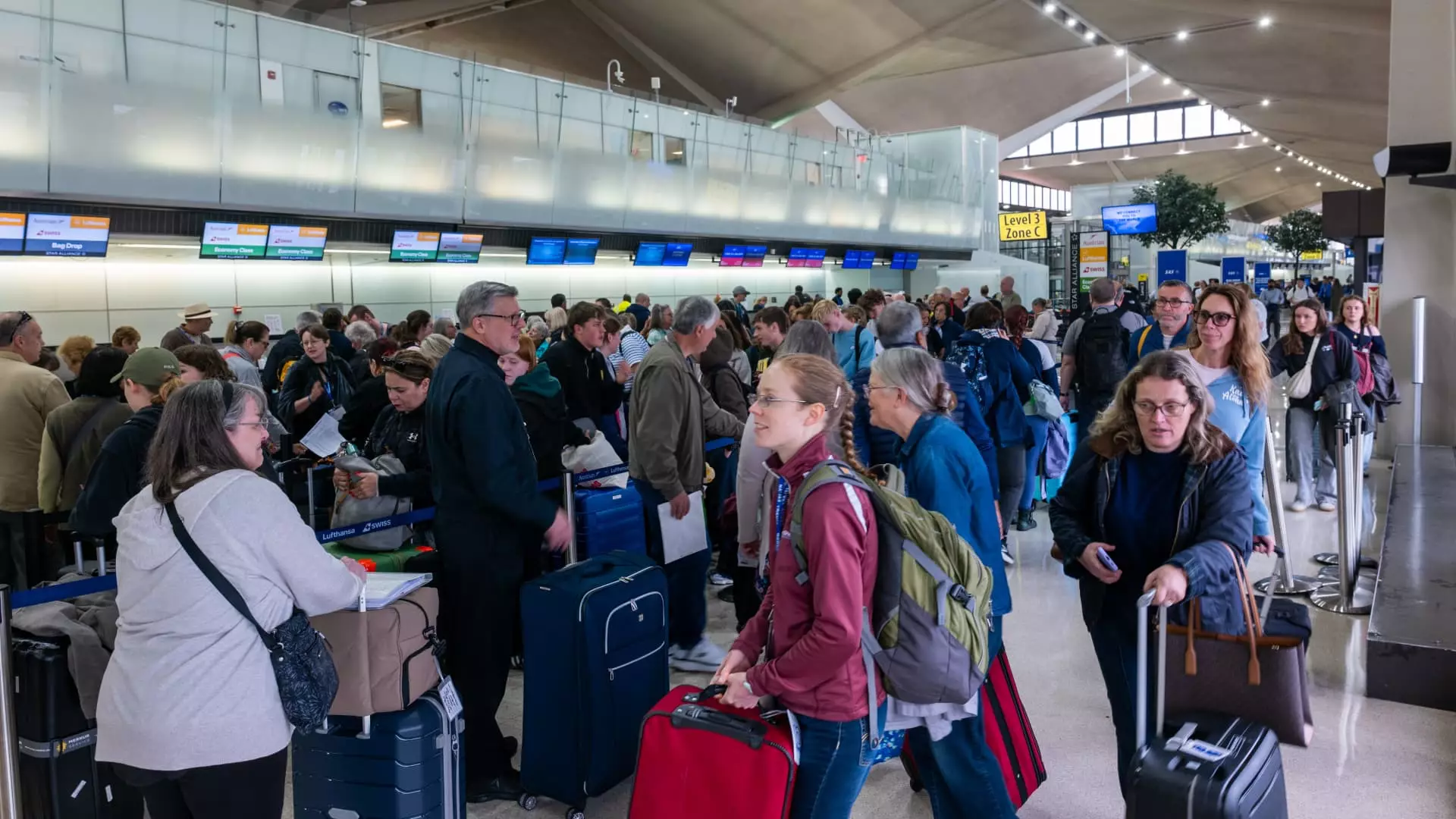In a chilling reminder of how precarious air travel can be, Newark Liberty International Airport faced a harrowing incident last week that underscored the dire state of America’s aviation infrastructure. Air traffic controllers experienced a complete blackout of communication and radar capabilities, inhibiting their ability to guide aircraft in and out of one of the country’s busiest airports. The National Air Traffic Controllers Association reported this failure, which led to enormous flight delays—over 1,500 cancellations, to put it bluntly—an alarming statistic for an airport at the core of transcontinental travel. This incident is not merely an isolated glitch; it exposes the systemic issues plaguing the air traffic control system and raises urgent queries about safety and resilience in an increasingly congested airspace.
But what piqued my concern further was not just the magnitude of the delays but the crippling staffing shortages that preceded and followed this incident. When the chaos unfolded on April 28, it became evident that the underlying problems—which have festered over years, if not decades—are only worsening. The Federal Aviation Administration (FAA) acknowledged this reality, revealing that the persistent lack of personnel compelled some controllers to take time off to recuperate from the stress this event caused. Despite the FAA’s commitment to revamping telecommunications systems, the fundamental question remains: how long can we rely on an already stretched workforce while waiting for long-overdue technological upgrades?
The Consequences of Neglecting Our Air Traffic Infrastructure
United Airlines has already responded to the fallout of this debacle by announcing the reduction of 35 flights a day from the Newark hub, a regrettable but necessary measure in hopes of alleviating systemic congestion. CEO Scott Kirby’s comments were particularly revealing, emphasizing how the outdated system can no longer accommodate the volume of air traffic generated by an ever-expanding network. “Newark airport cannot handle the number of planes that are scheduled to operate there,” he lamented, seemingly echoing the sentiments of professionals who have spent years calling for reform. The airline sector cannot be reduced to an assembly line of flights—passengers expect a level of reliability that simply cannot be guaranteed under the current conditions.
The FAA’s hiring strategies, particularly post-Trump administration, seem reactive rather than proactive, with incentives that barely scratch the surface of the staffing crisis. The callous reality, however, is that air traffic controllers are required to retire at 56. This creates a talent vacuum that the FAA struggles to fill. Transferring controllers from congested Long Island to Philadelphia as a stopgap measure was an interesting but insufficient strategy. While it may provide a temporary fix, it completely ignores the larger staffing problem at Newark. This is akin to placing a band-aid over a gaping wound—ultimately unsustainable.
Public Safety vs. Operational Efficiency
U.S. Transportation Secretary Sean Duffy’s emphasis on future technology upgrades is a step in the right direction, but one cannot help but feel skeptical. The notion that the current system operates “safely” due to FAA protocols ought to send chills down the spines of countless travelers. Grounding flights because of capacity constraints might save lives, but it is a stark indictment of a system that is operating on borrowed time. It reeks of complacency—a dangerous attitude in a high-stakes environment where lives hang in a delicate balance.
Moreover, New Jersey’s Governor Phil Murphy has poignantly pointed out that the lack of staffing in both Philadelphia and New York facilities is nothing short of a ticking time bomb, particularly as the region teeters on the brink of increased passenger traffic courtesy of the World Cup Finals. The Port Authority has invested billions to modernize Newark, but without a fully funded and adequately staffed FAA, these upgrades risk being little more than cosmetic improvements to an unreliable structure.
The Cost of Inaction
As travelers anticipate soaring passenger numbers in the near future, the imperative for a robust, well-staffed air traffic control system has never been clearer. After all, a failure to act won’t merely inconvenience passengers with delays; it poses a tangible risk to safety in the skies, which should never be a matter of political maneuvering or budgetary restraint. It is essential for the FAA to elevate its urgency in addressing these staffing shortages and prioritize a modern air traffic control system capable of handling today’s demands.
Ultimately, these failures must serve as a wake-up call not just for the authorities involved but for each and every one of us who relies on air travel. It is time to shed complacency and finally demand a system that reflects modern aviation needs—because lives are at stake, and we can no longer afford to settle for a system that merely limps along.

